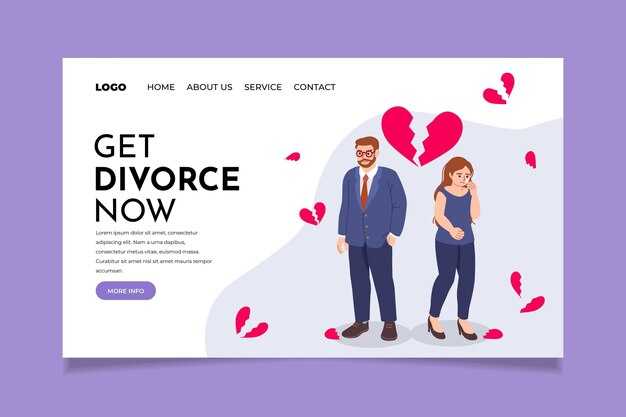Life is riddled with friction. People can be harsh. Situations get awkward. Your car malfunctions. Sometimes you must let people down, apologize, walk away, commit, or even break someone’s heart because that’s the honest, uncomfortable choice. Those moments—painful as they are—are how we grow. If you’ve been wounded so often that you shy away from those frictions, that’s what I mean by playing small: shrinking yourself to avoid discomfort, and in doing so blocking your ability to evolve. I spent most of my life doing exactly that. Maybe you recognize it in yourself. Here’s a photo of me from around 2012, when I was about 49—long before my “Crappy Childhood Fairy” era—when I was very much in hiding. The picture on the right is me today, thirteen years older and, in most ways, finally free to be myself. You can see the difference in my face; I certainly can. When I posted both images recently, some people immediately noticed a few cosmetic updates: I wear more eye makeup now so my eyes show through my glasses (I didn’t need them all the time back then), I repaired damaged teeth last year (they look almost too perfect), and my hair is more styled—advantages of having grown children and a thriving business. But beyond those surface changes there’s an inner shift I call shine. Over a series of videos I’m about to release, I’ll teach the practical shifts I made that created this transformation, and you can apply them too. To start, I’ll tell you what was happening when each photo was taken. Oddly, both were shot by the same person—my friend and colleague Brad Cooper—which makes the comparison feel even more real. In the older image I was a divorced mum with two kids, roughly nine and twelve. I had launched a small video production company from nothing during the 2008 financial crash after losing all of my prior consulting work. With no income, no savings, and nobody to back me financially, I was desperate to keep food on the table and a roof over our heads. After a few hard years, my little company started to chug along—like the persistent little engine that could. I assembled a team and persuaded organizations to hire us to make videos for the web—back then I had to convince people that websites could host video (this was the era of “no bandwidth” objections and YouTube was only about two years old). Being early in the San Francisco market turned out to be smart, and slowly the business found its footing. I won work from some truly decent clients who treated me fairly, but there was one client—one person—whose behavior repeatedly crossed my boundaries so badly that I had nightmares and panic attacks between shoots because I never stood up for myself. I frequently put in three times the hours we’d agreed on, in chaotic conditions on the client’s side, with scripts that didn’t exist and no compensation for the overtime. On one shoot, the actors had no scripts until filming had already begun; several of them understandably refused to work under those circumstances, and you don’t get good performances when people don’t have time to learn lines. One actor walked out, which turned the shoot into a crisis (and an opportunity, as I’ll explain in a moment). I tried to ask for extra pay—this became much more work—but they refused to take responsibility for the mess they’d created. Production without prepared actors means endless takes and massive editing work to stitch things together; when people know their lines you can roll the camera and capture clean takes that cut together and stay on budget. Instead we’d be wrapping at 11:00 p.m., exhausted and without food—repeatedly. And what did I do? I kept accepting projects from them because I needed the money. In those days I had made some progress with healing from complex PTSD, but not enough to handle conflict with confidence. When your nervous system is fragile, standing up to someone feels like a risk of complete dysregulation—you can’t direct a shoot if you’re falling apart emotionally. So I kept myself small: swallowing anger, acting pleasant, giving up time my family needed, and saying yes to dozens of new projects because I felt I had to. Look at that 2012 photo and you’ll see what I mean—there’s a fear tamped down in my eyes. People were kind in the comments when I shared the images—“you’re beautiful in both,” they said, and I appreciate that—but the point is not prettiness. In the older picture I am clearly constricted by fear. In the newer one I appear freer, I have more glow—a kind of shine. At one point, after too many compromises, I had a disturbing dream: I was speaking and the client’s voice came out of my mouth as if they were controlling me. I woke up shaken, and realized I had literally allowed them to speak through me. Producing someone else’s message puts your voice into the world, and I had begun to feel complicit in things I morally disagreed with—practices that made me uncomfortable, even queasy. I decided I couldn’t keep doing it. I gathered enough courage to say, “I won’t make this video,” and, though I was prepared to walk away, I didn’t have to force that choice—because when I refused they turned vindictive, threatening to badmouth me to other clients. Still, I felt a peace about leaving that toxic situation, and once it imploded, the problem went away. Strange but true: when you cut out something rotten, better opportunities seem to find you. That space you free up lets brighter things take root—clients who were fairer, more interesting work, higher income—and suddenly I didn’t have to tolerate mistreatment or produce messages that made me feel sick. I was no longer terrified of starving. Back then my work involved writing, producing, and directing online training and marketing videos for other people, and I was skilled at helping them shine on camera. Speaking on camera is tough for many people; often the subjects weren’t actors but regular folks, and when they stumbled—fumbled the teleprompter, didn’t show up, or just couldn’t act naturally—I could step into whatever role the production needed. I could rewrite a script on the fly, check microphones, act as an on-camera expert, make dry technical material sound warm and clear, and even improvise whole scenes and get them in a single take. My clients used to joke that I should be the one teaching and the one in front of the lens. So I took the next step and stopped playing small. Playing small is a defensive strategy—usually unconscious—where we shrink: avoiding self-advocacy, ducking risks, and steering clear of what we truly want in the hope we’ll be shielded from criticism or failure. It’s extremely common among people who experienced abuse or neglect in childhood—I was one of those kids, and I know many of you were too. At first, shrinking feels safe, but ultimately it traps you, robs you of joy, and keeps you from the life you deserve. The good news is you can free yourself and begin to shine. Over the coming days I’ll publish a series of videos showing how to spot where you’re playing small and practical ways to change it. Sometimes simply seeing the pattern is enough to shift it; other times it requires more work. This isn’t limited to your career—it affects how you show up in relationships, how you pursue purpose and pleasure, and how you care for yourself. Now, one favor: make sure you’re subscribed to my channel. As I record this I’m very close to reaching a million subscribers—an old stretch goal of mine that’s finally within sight. If you’re not subscribed, please hit the button; let’s get to that million together. While you’re at it, tap the bell so you’ll get a notification when each new video in this series goes live—you’ll want to watch them all. There are also free tools, courses, and webinars linked in the description below this video if you want to dig deeper. I’ll leave you with that for now, and I’ll see you very soon. [Music]
Practical Steps to Stop Playing Small
Below are concise, actionable practices you can start using today—no big overhaul required. Pick one or two and try them for a week.
1) A simple 3-step decision method
Notice → Name → Choose. When you feel contracted or pushed into “playing small,” pause and do three things:
- Notice: attend to the physical sensation (tight throat, clenched jaw, shallow breath).
- Name: give it a short label—“fear,” “shame,” “overwhelm.” Naming reduces intensity.
- Choose: pick one small, practical response—step back, ask for clarification, say no, or request time to decide.
2) Micro-regulation tools for your nervous system
When conflict or stress arrives, your body often reacts before your mind can. These quick tools help you stay present so you can respond instead of freeze or collapse.
- Box breathing: inhale 4 counts — hold 4 — exhale 4 — hold 4. Repeat 4 times.
- Grounding: plant your feet, press them into the floor for 10–20 seconds and name five things you can see, four you can touch, three you can hear.
- Orientation: slowly look left-right-up-down to reorient your vestibular system and reduce alarm.
3) Boundary phrases that work
Practice short, clear scripts so you don’t over-explain or justify. Rehearse them out loud:
- “Thank you, I can’t take that on right now.”
- “I’m not comfortable with that request. I’m going to pass.”
- “I need to finish current commitments before I can consider more work.”
- “I hear you. I’ll get back to you by [time/frame].”
4) Tiny experiments to build confidence
Start with low-risk acts of visibility and increase gradually. Examples:
- Share a short opinion in a meeting instead of staying quiet.
- Post a short video or comment publicly once this week.
- Ask for a small raise or fee increase on a single project.
5) Daily practices that increase “shine”
Shine isn’t magic; it’s built with daily habits that align body, voice, and values.
- Posture pause: for 30 seconds, stand tall, shoulders back, breathe—this changes your physiology and voice.
- Voice warm-up: read a paragraph aloud in the morning to strengthen presence and clarity.
- Mirror affirmation: name one specific strength before key interactions—“I’m clear,” “I deserve this.”
6) Practical business and career moves
If you’re leaving toxic clients or stepping into more visible roles, protect your time and value.
- Use written scopes of work and clear payment terms—no surprises.
- Ask for testimonials and document wins to use in pitches.
- Package services into clear offerings and prices so you can say yes selectively.
7) When to get support
Healing patterns from childhood or trauma often benefit from professional help. Consider therapy or coaching when patterns feel entrenched or you’re repeatedly overwhelmed. Useful approaches include somatic therapies, EMDR, CBT, and polyvagal-informed work. You don’t have to do this alone.
8) Recommended short reads and practices
If you want a few places to start, consider books and authors that combine nervous-system work and courage-building: Brené Brown (on vulnerability), Tara Brach (mindfulness and compassion), Peter Levine or Bessel van der Kolk (trauma and the body). Pair reading with a daily 5–10 minute grounding or breath practice.
9) Handling setbacks
Setbacks are part of growth. If you try something and it goes poorly, debrief briefly: what happened, what did you learn, what will you try next? Use compassionate curiosity instead of harsh self-criticism.
10) A short daily checklist to practice shine
- One intentional breath practice (2–5 minutes)
- One small assertive act (email, ask, say no)
- One visibility move (post, speak up, record)
- One kindness to yourself (rest, walk, hydrate)
Start small. The cumulative effect of tiny, consistent shifts is enormous—more freedom, clearer boundaries, and a steadier presence that other people experience as “shine.” If you want, in the next video I’ll take you through a 10-minute guided regulation and boundary rehearsal you can practice before any difficult conversation. Hit subscribe, tap the bell, and I’ll see you there.


 Here’s How You Can Stop Hiding and Start to SHINE">
Here’s How You Can Stop Hiding and Start to SHINE">



 The Single Greatest Predictor of Divorce is…">
The Single Greatest Predictor of Divorce is…">
 When you feel like Roommates in your Relationship">
When you feel like Roommates in your Relationship">
 My Ego couldn’t handle her HONESTY, can yours?">
My Ego couldn’t handle her HONESTY, can yours?">
 Self-Differentiation: Interview with Jerry Wise, Family Systems Expert">
Self-Differentiation: Interview with Jerry Wise, Family Systems Expert">
 Socializing is Stressful for People with CPTSD; Is it Controlling Your Life?">
Socializing is Stressful for People with CPTSD; Is it Controlling Your Life?">
 пїЅпїЅ THIS Is the Kind of Woman Avoidants Secretly Can’t Resist пЅњ Mel Robbins motivational speech">
�� THIS Is the Kind of Woman Avoidants Secretly Can’t Resist | Mel Robbins motivational speech">
 A Test To Measure How Narcissistic Your Parents Were">
A Test To Measure How Narcissistic Your Parents Were">
 Stuck in a Job You Hate? It’s Not Just Burnout. It’s Trauma.">
Stuck in a Job You Hate? It’s Not Just Burnout. It’s Trauma.">
 THIS Happens When the Avoidant Realizes They Lost You (Must Watch) | Jordan Peterson">
THIS Happens When the Avoidant Realizes They Lost You (Must Watch) | Jordan Peterson">
 Why Dismissive Avoidants Secretly Need Multiple Partners | The Psychology of Emotional Control">
Why Dismissive Avoidants Secretly Need Multiple Partners | The Psychology of Emotional Control">